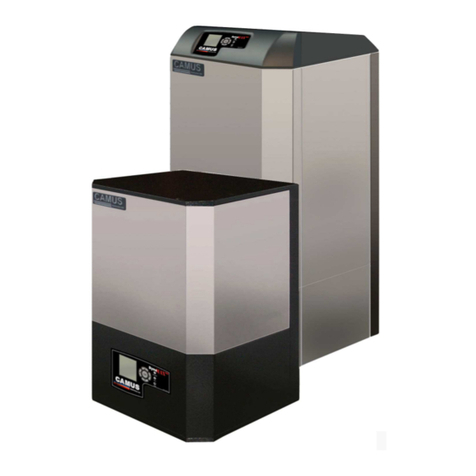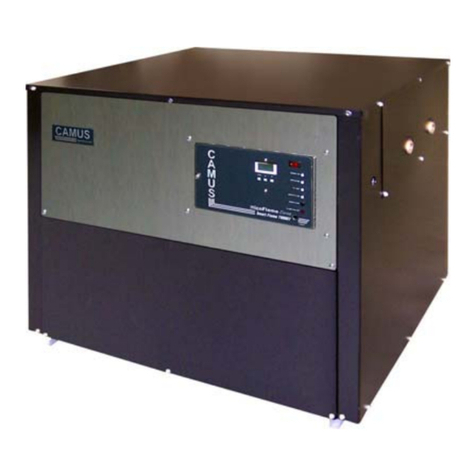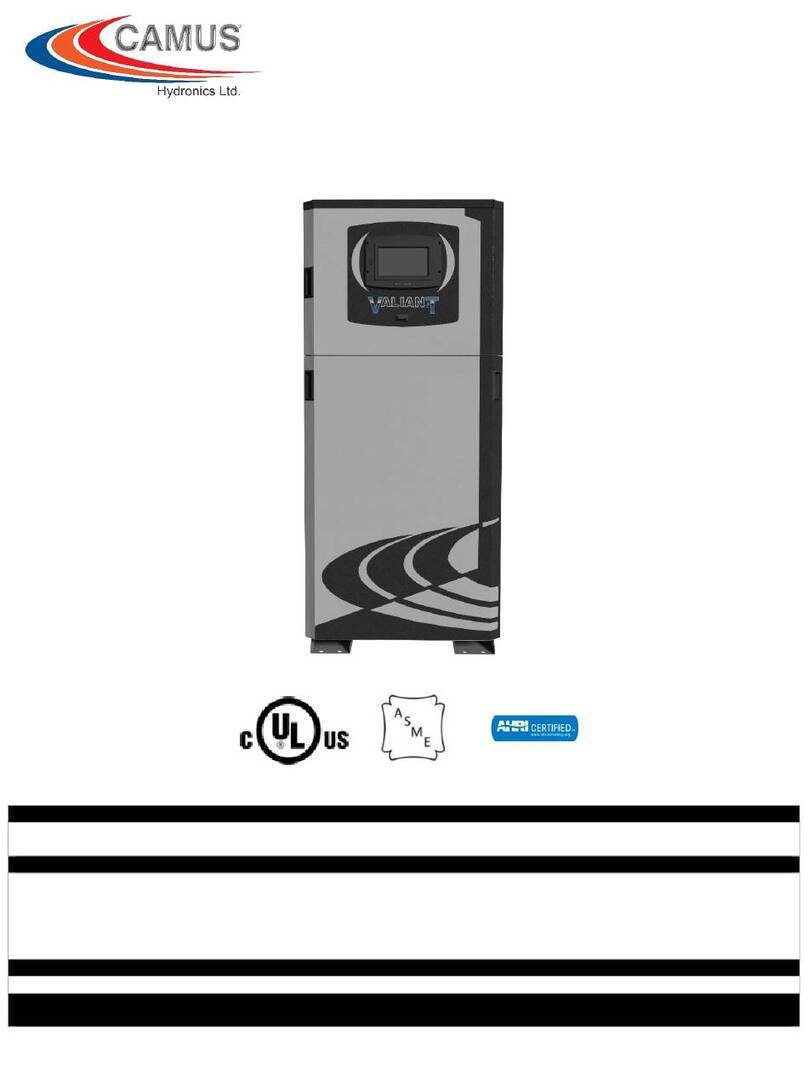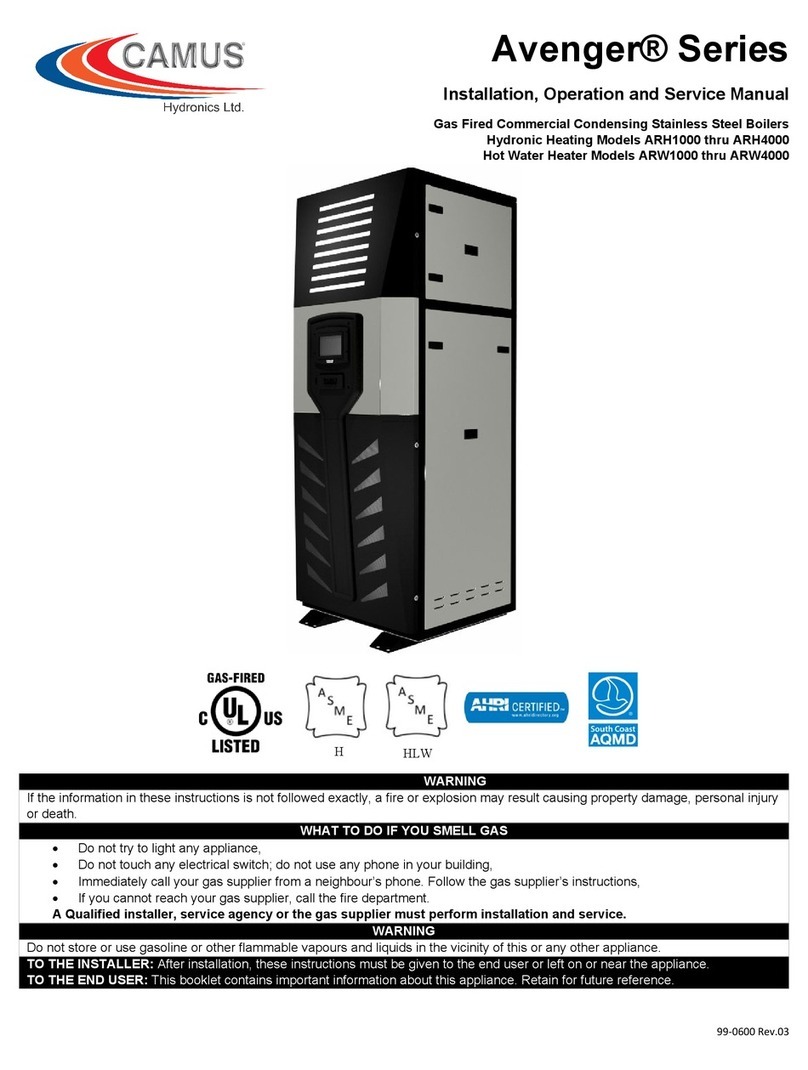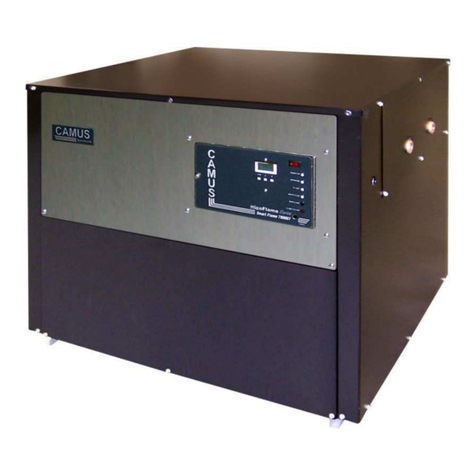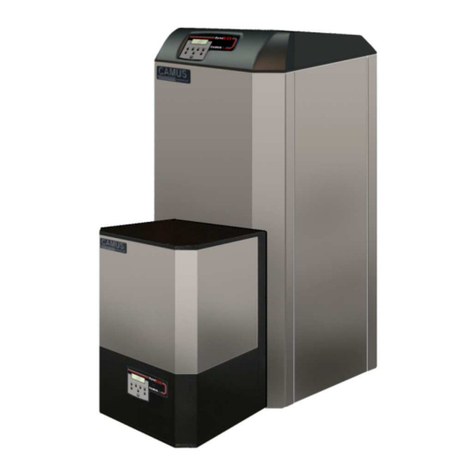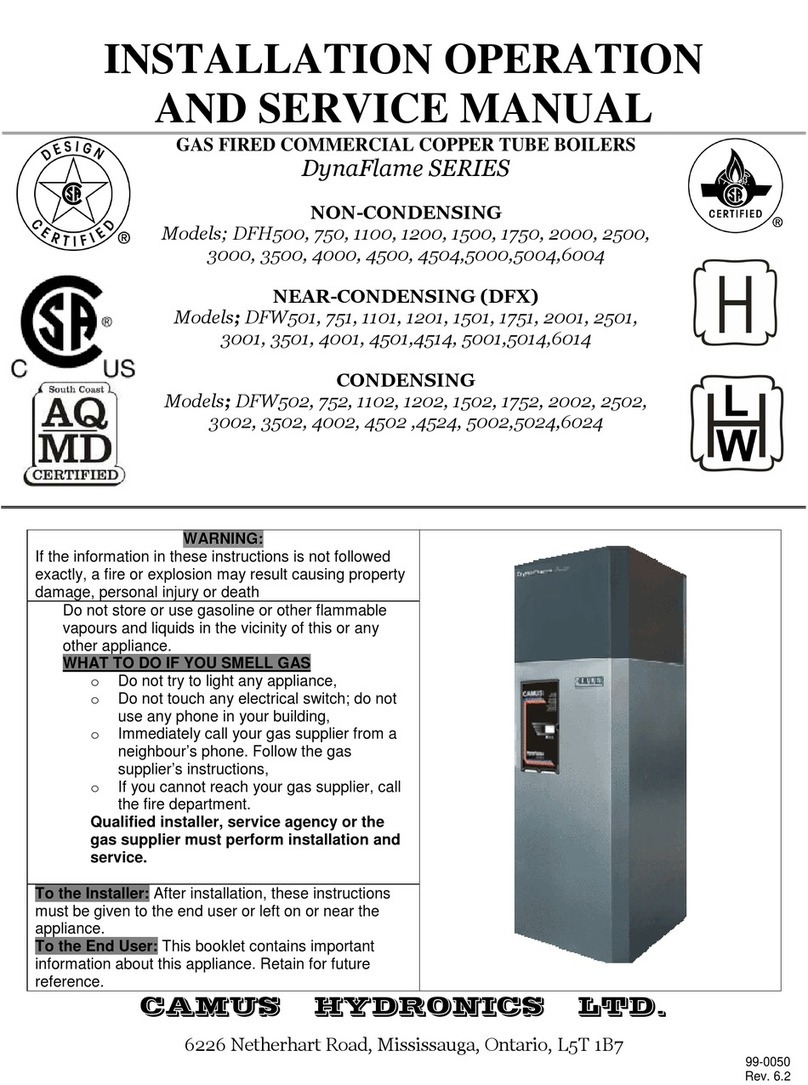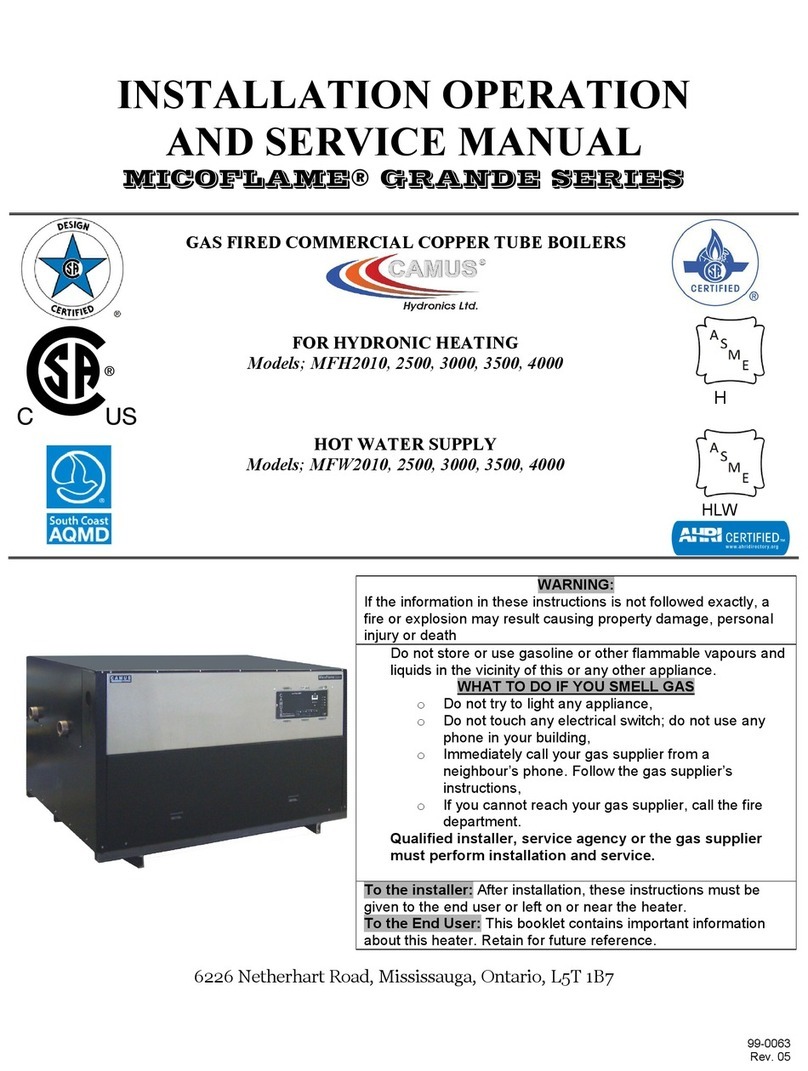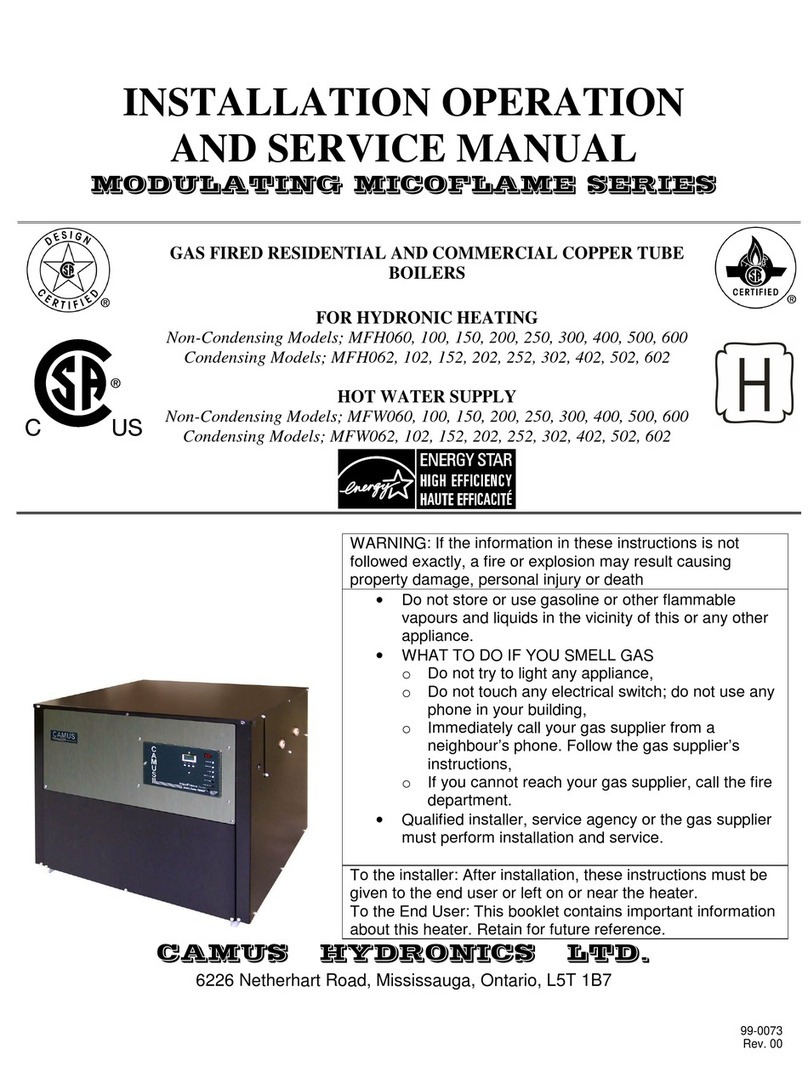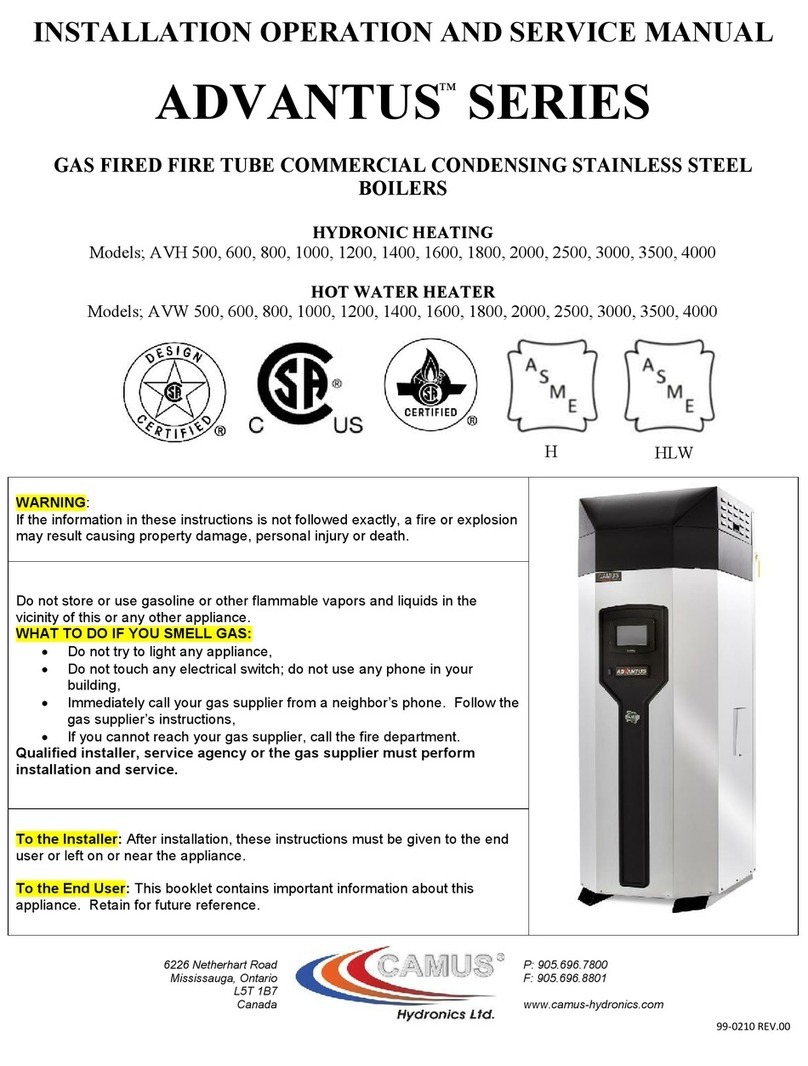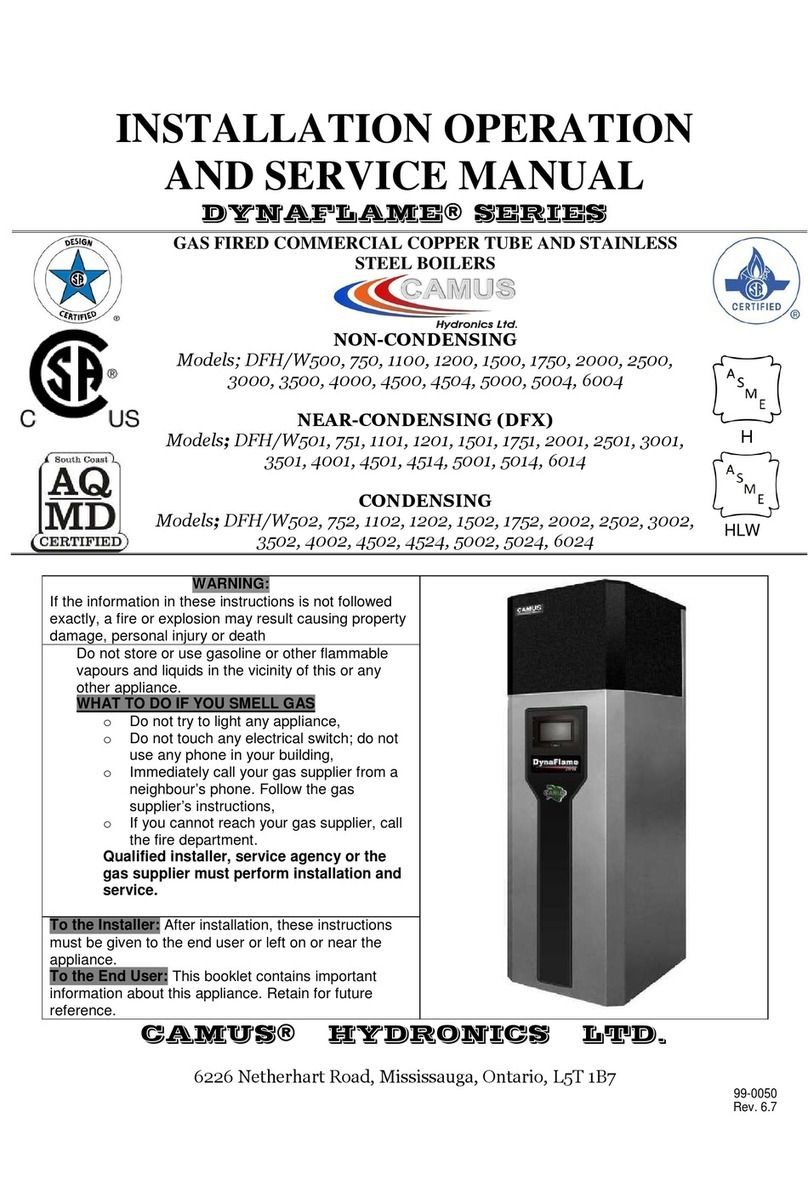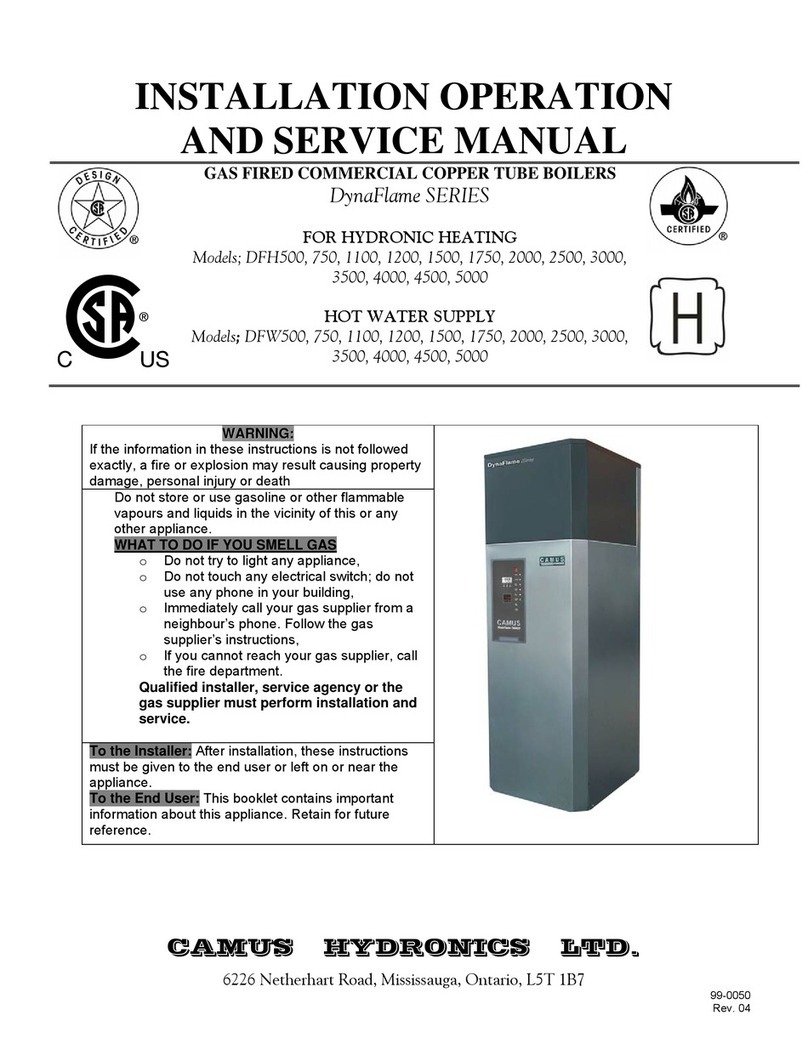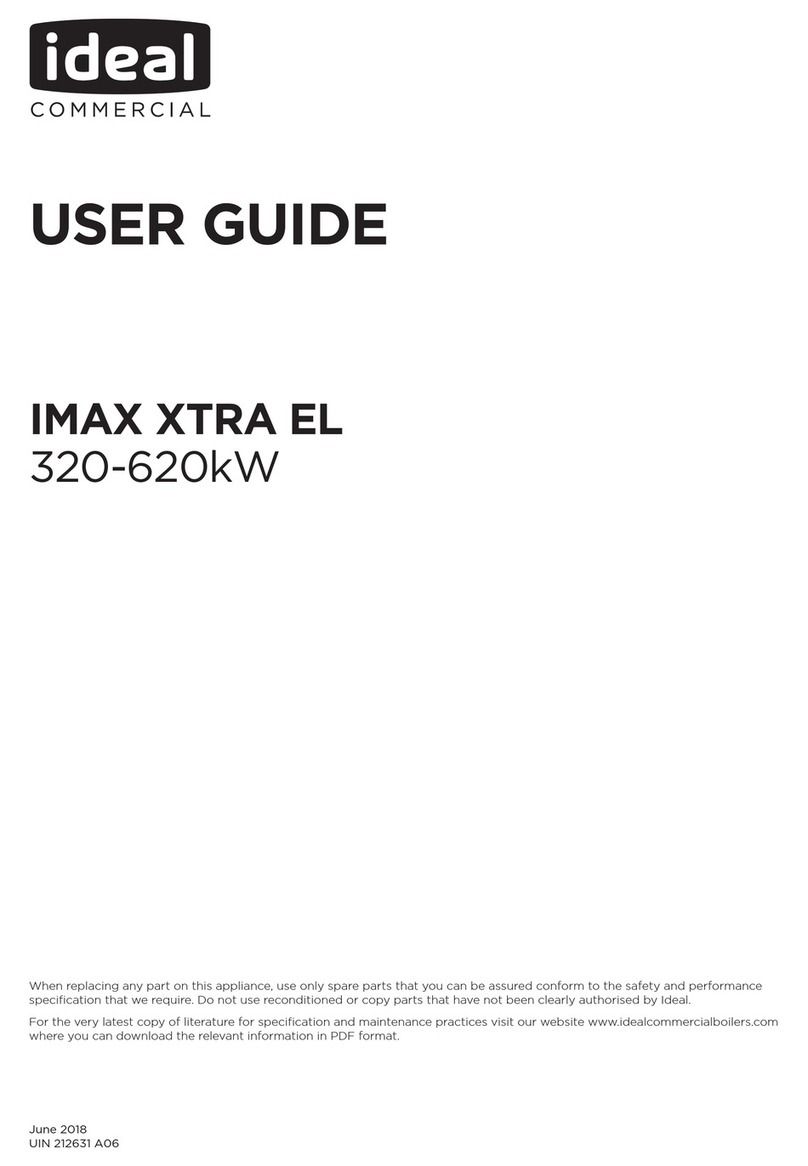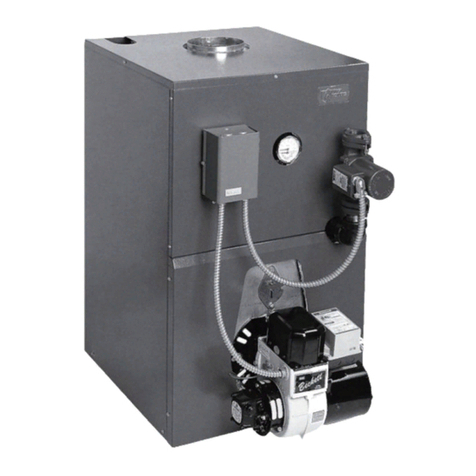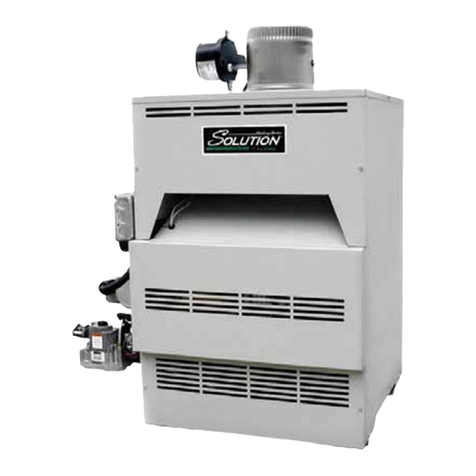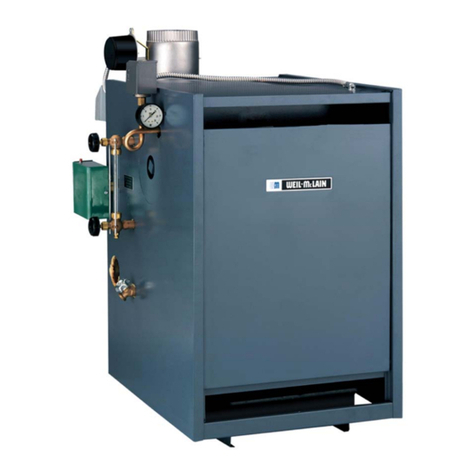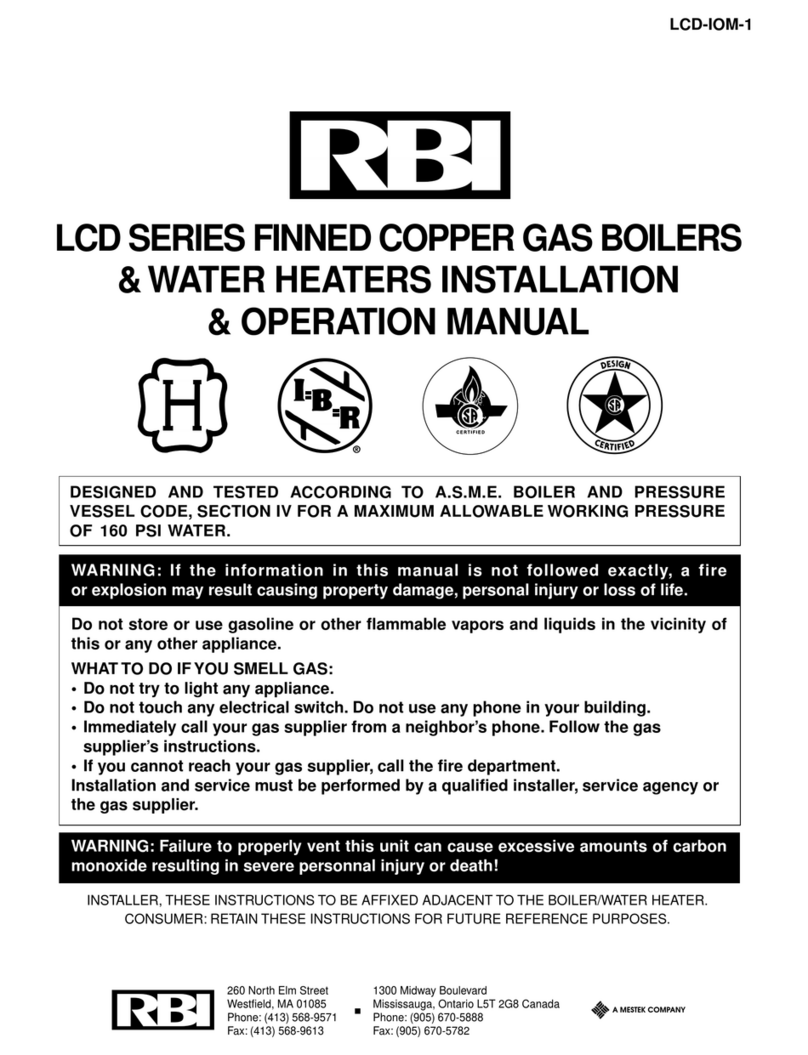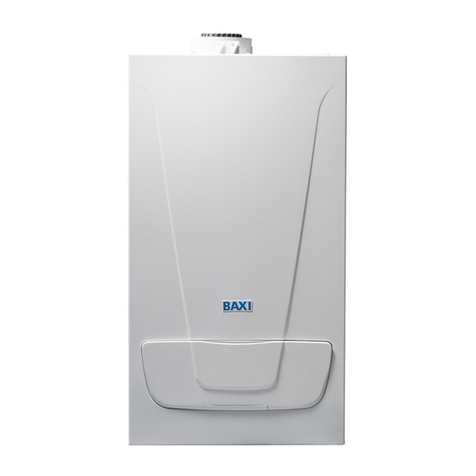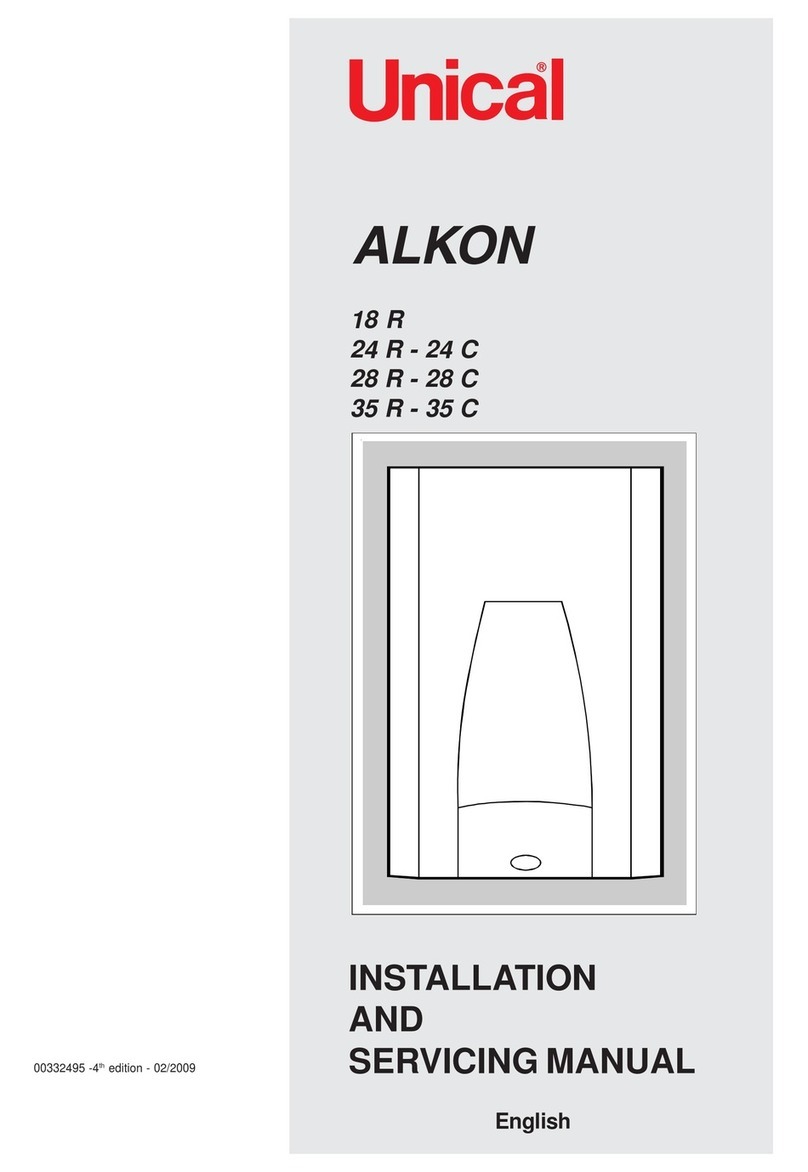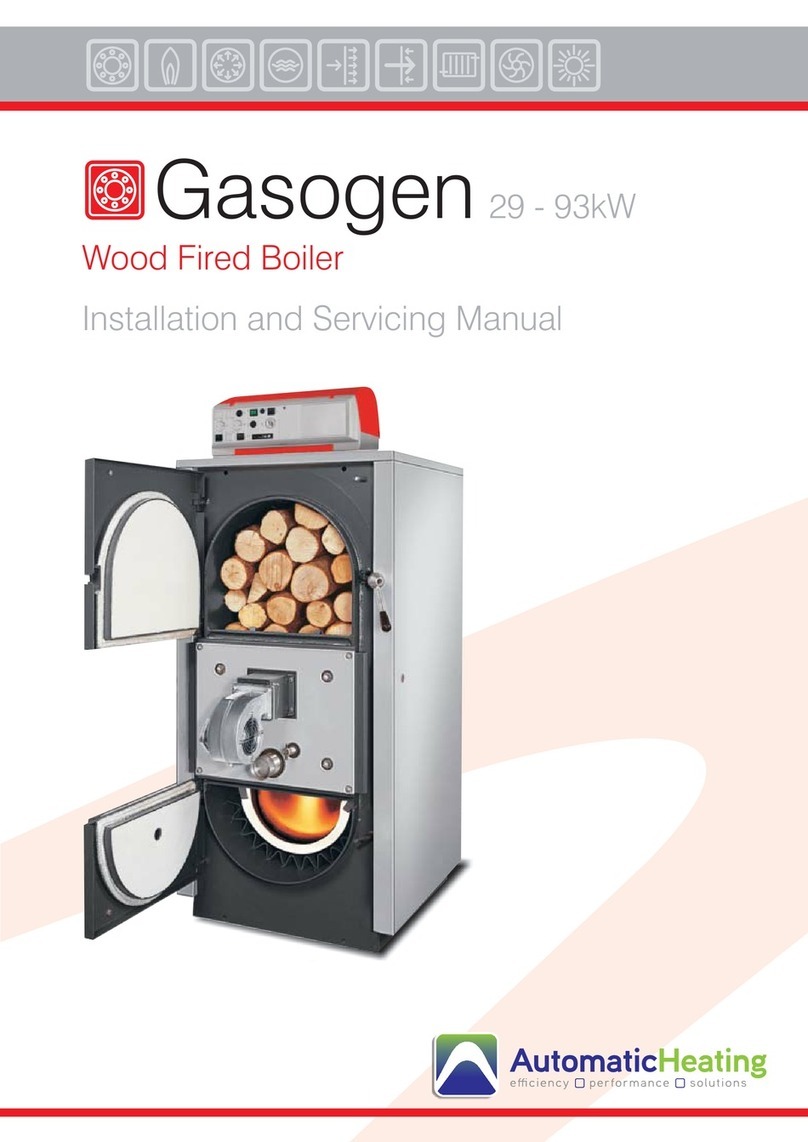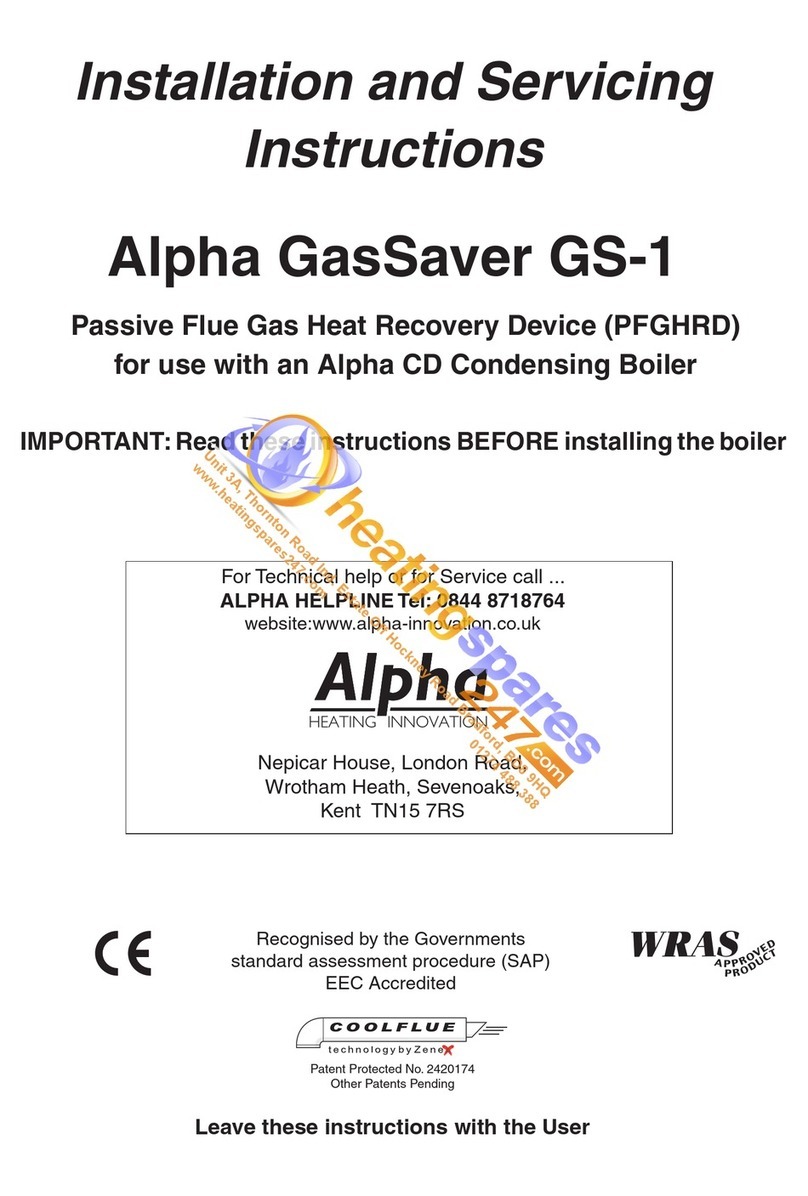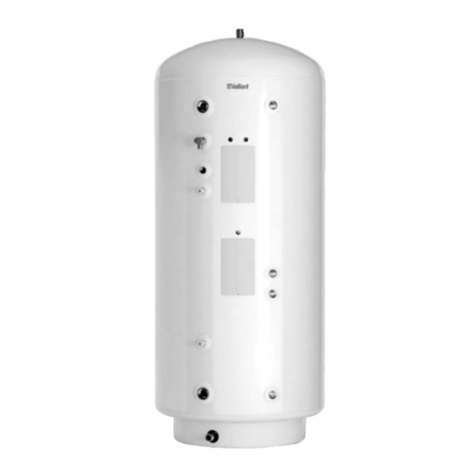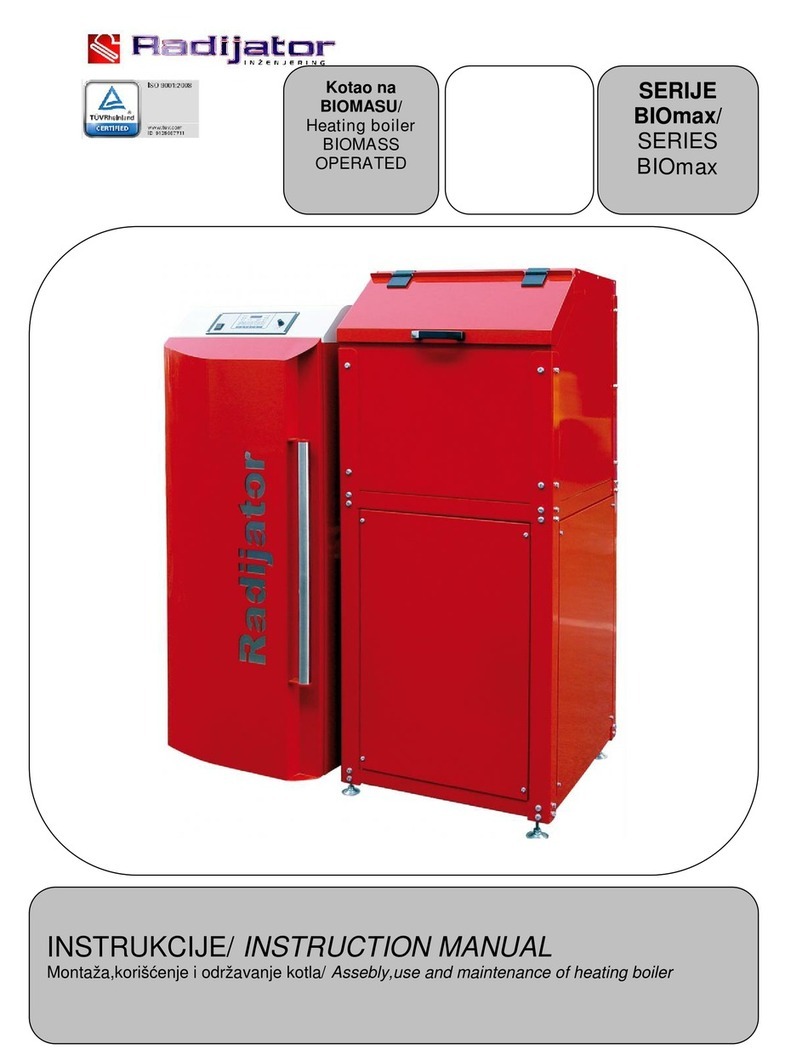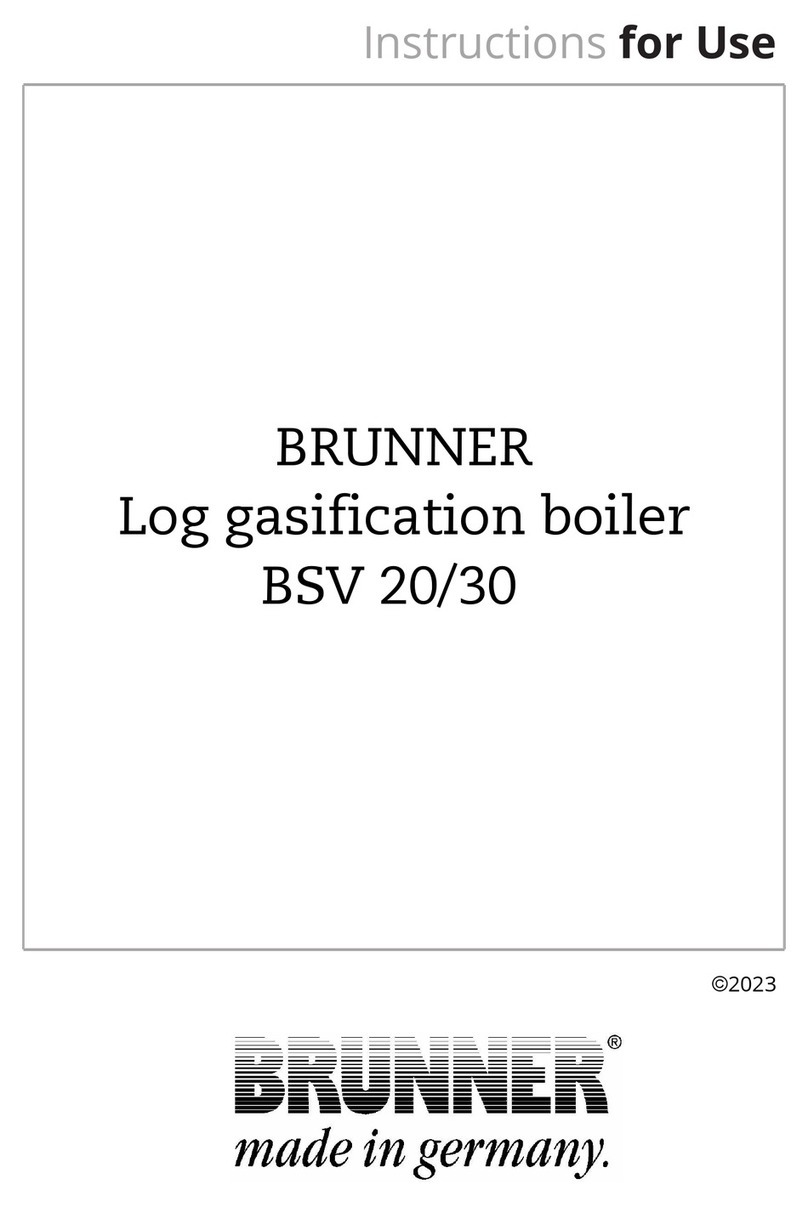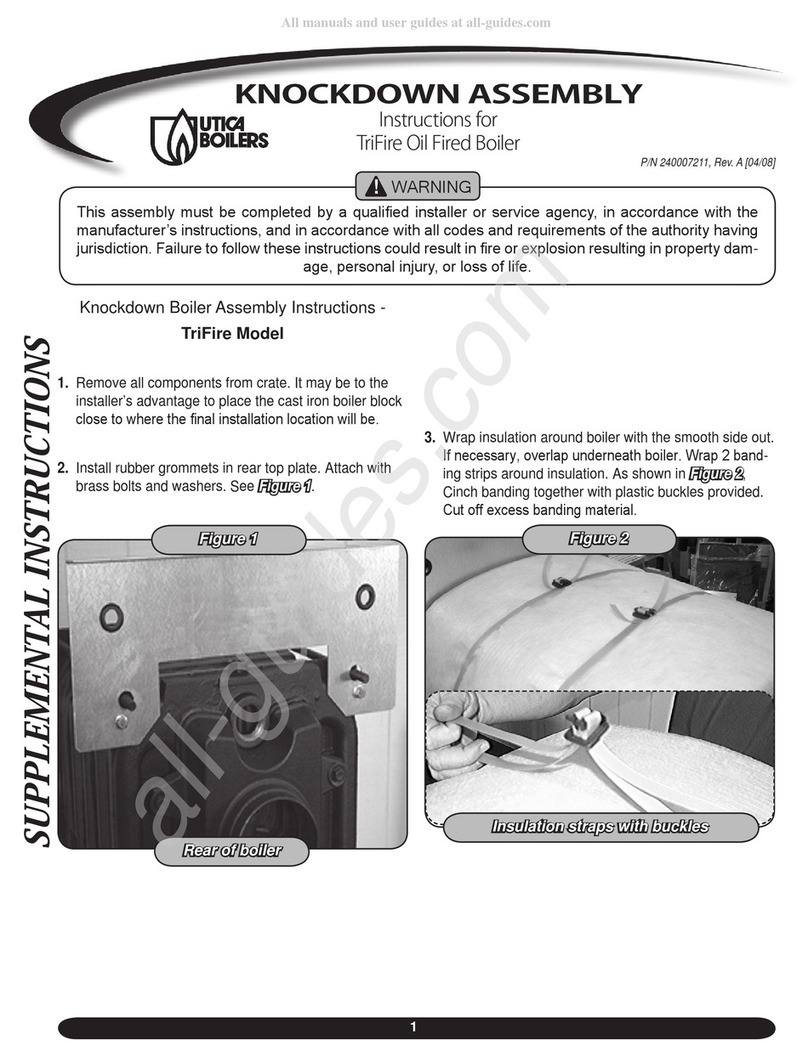•Factory warranty shall apply only when the appliance is
installed in accordance with local plumbing and building
codes, ordinances and regulations, the printed
instructions provided with it and good industry practices.
•Excessive water hardness causing a lime build-up in the
copper coils or tubes is not a fault of the appliance and is
not covered by warranty. Consult the factory for
recommendations for use in hard water areas. (See
Water Treatment and Water Chemistry)
•Excessive pitting and erosion on the inside of the copper
tube may be an indication of anundersized heater or may
be caused by too much water velocity through the tubes
and is not covered by the manufacturer’s warranty (See
Boiler Flow Rates and Temperature Rise for flow
requirements).
•Using or storing corrosive chemicals in the vicinity of
this appliance can rapidly attack the copper tubes and
coils and voids warranty.
•In case of Condensing or Non-Condensing DynaFlame,
The Main (Primary) Heat Exchanger is intended to
operate under non-condensing conditions. Inlet water
temperatures must be maintained at 115°F (46°C) or
higher for non-condensing models and 130°F (55°C) or
higher for near-condensing (DFX) and condensing
models. Warranty is void if the Primary heat exchanger is
allowed to operate in condensing mode.
•Damage caused by freezing or dry firing voids
warranty.
•This appliance is not to be used for temporary heating
of buildings under construction.
•The manufacturer shall NOT be held liable for any
personal injury or property damage due to ice formation
or the dislodging of ice from the vent system or the vent
termination
1.9 REMOVAL OF EXISTING APPLIANCE
When an existing appliance is removed from a common
venting system, the common venting system is likely to be
too large for proper venting of the appliances remaining
connected to it. At the time of removal of an existing
appliance, the following steps must be followed with each
appliance remaining connected to the common venting
system placed in operation, while the other appliances
remaining connected to the common venting system are not
in operation.
•Seal any unused openings in the common venting
system.
•Visually inspect the venting system for proper size and
horizontal pitch and determine that there is no blockage,
restriction, leakage, corrosion or other deficiency, which
could cause an unsafe condition.
•Insofar as is practical, close all building doors and
windows and all doors between the spaces in which the
appliances remaining connected to the common venting
system are located and other spaces of the building. If
applicable turn on the clothes dryers and any appliances
not connected to the common venting system. Turn on
any exhaust fans, such as range hoods and bathroom
exhausts, so they will operate at maximum speed. Do not
operate a summer exhaust fan. Close fireplace dampers.
•Place in operation the appliance being inspected. Follow
the lighting instructions. Adjust thermostat so that
appliance operates continuously.
•If provided, test for spillage at the draft control device
relief opening after 5 minutes of main burner operation.
Use a cold mirror, or the flame of a match or candle.
•Test for spillage at the draft control device relief opening
after 5 minutes of main burner operation.
•After it has been determined that each appliance
remaining connected to the common venting system
properly vents when tested as outlined above, return
doors, windows, exhaust fans, fireplace dampers and any
other gas-burning appliance to their previous condition of
use.
•Any improper operation of the common venting system
should be corrected so that the installation conforms to
the National Fuel Gas Code, ANSI Z223.1 and/or
CAN/CGA B149, Installation Codes. When resizing any
portion of the common venting system, the common
venting system should be resized to approach the
minimum size as determined using the appropriate tables
in Part 11 of the National Fuel Gas Code, ANSI Z223.1
and /or CAN/CGA B149, Installation Codes.
Heat exchanger surfaces and vent piping should be checked
every six months for deterioration and carbon deposits.
Remove all soot or other obstructions from the chimney and
flue, which might impede draft action. Replace any damaged
or deteriorated parts of the venting system.
A qualified service technician should follow this procedure
when inspecting and cleaning the heat exchanger and vent
pipe.
1) Turn off electrical power and main manual gas shut-off
and allow appliance to cool down.
2) Remove the vent pipe running to the chimney and check
heat exchanger, vent, and chimney for obstruction and
clean as necessary.
3) Remove burner from appliance and carefully clean as
required. Never brush or wipe the knitted metal fibre
surface, use a garden hose and wash instead. Caution:
Never use pressure washer to clean the burner.
4) Use pressure wash to clean heat exchanger if
necessary.
5) Reinstall parts removed in steps 2 and 3. Be sure that
vent pipe has proper pitch and is properly sealed.
Replace any damaged gasket. Note that the burner is
supplied with two gaskets: a high temperature ceramic
paper gasket under the burner flange and a stamped
silicon gasket between the burner flange and fan flange.
Tighten fan flange mounting nuts to 20 ft-lb.
6) Restore electrical power and gas supply to appliance.
7) Place appliance in operation using lighting instructions
provided.
8) Confirm proper operation of all safety devices
9) Check for gas leaks and proper vent operation.
